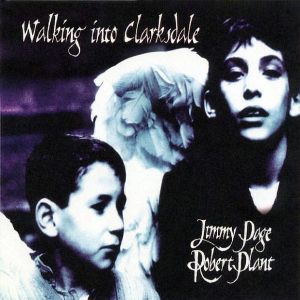
While Roger Daltrey and John Entwistle were always more keen to play gigs as The Who than Pete Townshend was, even Roger would admit that much of the motivation to start touring again was to support John, who spent his money before the checks had even cleared. Performing as a mostly stripped-down unit with Zak Starkey on drums and Rabbit Bundrick on keyboards, they sounded as good as ever.
As the new century moved along, Pete continued to explore the possibilities of the Web by releasing official bootlegs of Who shows, as well as the very-well-received The Blues To The Bush, which captured the last tour before John Entwistle died. The survivors’ determination to continue added more fat to the critical fire.
First, there were two new songs on yet another hits collection. Then & Now featured “Real Good Looking Boy”, which might have been better had it not interpolated an old Elvis song, and “Old Red Wine”, a bittersweet tribute to John, alongside another permutation of songs fans owned already. Then came the sporadic mentions of a brand new Who album, prefaced in the UK by an EP of a “mini-opera”. Not an April Fool’s joke, the Wire & Glass EP really did have six shortish songs stuck together—just like “A Quick One While He’s Away”! That’s the extent of the similarity, and fans tried not to hold their breath for the whole album.
Was Endless Wire an instant classic? No. Is it better than It’s Hard, their last “new” album? Oh God yes. Is it nice to hear Roger singing new songs by Pete? Undoubtedly. Will you listen to this album again? Hard to say. It’s not all good, and the ideas in the mini-opera are pretty stumbly, but the spark is definitely there. (Plus, for $10 at Best Buy—the album with extended versions of two tracks, plus a bonus live CD, and a bonus live DVD—it was tough to pass up.)
The opening “Fragments” was developed from Pete’s recent Lifehouse revival, and is no “Baba O’Riley”. “Man In A Purple Dress” is an immediate improvement, a Dylanesque tirade against the hypocrisy of modern religion.
From there, the album is just okay, and only occasionally embarrassing. Pete’s rarely had an idea as badly developed as “Mike Post Theme”, where he tries to justify the use of Who classics on TV shows, and then “In The Ether” is delivered in a raspy character’s voice that sounds like a bad Tom Waits impression. “Black Widow’s Eyes” and “Two Thousand Years” cover recent events, while “God Speaks Of Marty Robbins” gives lyrics to an instrumental recently released on Scoop 3. “It’s Not Enough” and “You Stand By Me” look at devotion from opposite sides of a relationship.
The mini-opera takes up the rest of the album, and even expanded from the EP, it’s just not easy to navigate. Much of it was inspired by his equally impenetrable novella The Boy Who Heard Music, which was something of a sequel to Psychoderelict, if that helps. “Sound Round” and “Pick Up The Peace” evoke Lifehouse, but “Unholy Trinity”, “Trilby’s Piano” and “They Made My Dream Come True” are simply too literal to be appreciated. (“We Got A Hit” should have been kept as short as some of the links on Tommy.) Things improve a bit with the title track, although “Mirror Door” is a swing and a miss. The finale of “Tea And Theater”, at least, provides a moment that can be appreciated outside of its context.
It’s not easy to get excited about a band calling themselves the Who that doesn’t include John Entwistle and Keith Moon. However, in Zak Starkey (Ringo’s son) they finally have a touring drummer that plays enough like Keith without being a complete mimic. (Unfortunately, he was touring with Oasis so he’s not on the album.) Pino Palladino is a competent and unobtrusive bass player, even if he did do an album with John Mayer.
Ultimately, Endless Wire is a gift from Pete to Roger, who wanted to sing his music, and supported him through the turmoil of the past few years. It’s an acknowledgment of their history, knowing that life is short and time is precious. And it is a blessing for the fans, because if this is indeed their last joint musical statement, it’s a much better epitaph than It’s Hard (their last album with John) or even Who Are You (their last album with Keith). Roger and Pete, now both in their 60s, exude such life in what they do, whenever they do it, that they are an inspiration. We should all be so lucky to display such vitality when we get there.
The Who Then And Now (2004)—3½
The Who Endless Wire (2006)—3





:format(jpeg):mode_rgb():quality(40)/discogs-images/R-974284-1179648422.jpeg.jpg)







